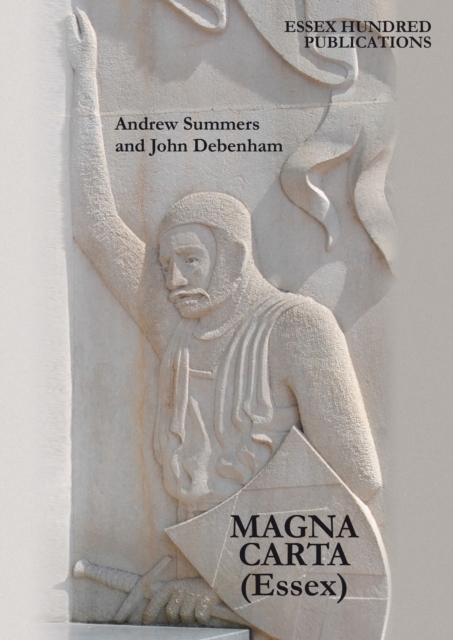
Magna Carta : In Essex Paperback / softback
by Andrew Summers, John Debenham
Paperback / softback
Description
Magna Carta (Essex) examines the events and background leading up to the sealing of the Magna Carta by King John in the year 1215.
We look particularly at the status of Essex at the time, the role of its powerful nobility and some of the curious connections the county has with this historic event.
In a few pages we have tried to summarise the above as concisely and as simply as possible. Many readers may be familiar with two of Magna Carta's most famous clauses:- 39.
No free man shall be seized or imprisoned, or stripped of his rights or possessions, or outlawed or exiled, or deprived of his standing in any way, nor will we proceed with force against him, or send others to do so, except by the lawful judgment of his equals or by the law of the land. 40. To no one will we sell, to no one deny or delay right or justice.
Yet these are only two of some 61 clauses set down in order of ranking.
They have been quoted frequently at turning points during English history such as the trial and execution of King Charles I and the arrival of William and Mary, followed by Queen Anne, after the 'Glorious Revolution'.
These two clauses are pillars of the US constitution.However the word 'free men' is open to misinterpretation. In 1776, in the United States, slaves were not 'free men' so the clause did not apply.
This was also the case in feudal England where, in 1215 and for many years after, most people who worked on the land were in servitude to their baronial masters. There are three other clauses in the Magna Carta that were perhaps of particular interest to the inhabitants of Essex;- 44.
People who live outside the forest need not in future appear before the royal justices of the forest in answer to general summonses unless they are actually involved in proceedings or are sureties for someone who has been seized for a forest offence. 47. All forests that have been created in our reign shall at once be disafforested.
River-banks that have been enclosed in our reign shall be treated similarly. 48. All evil customs relating to forests and warrens, foresters, warreners, sheriffs and their servants, or river-banks and their wardens, are at once to be investigated in every county by twelve sworn knights of the county, and within forty days of their enquiry the evil customs are to be abolished completely and irrevocably.These three clauses were significant since, when the Magna Carta was sealed in 1215, practically the whole of Essex was designated 'forest'. Forest then did not simply mean an area of densely wooded oak and beech, picturesque glades and clearings such as, for example, Epping Forest is today.
The medieval 'forest' was an area of unenclosed countryside.
Forest land could be wooded, part agricultural with meadows or just plain heath or scrub land and could even include towns and villages. Perhaps more sinister, it was an area where 'Forest Laws' applied.
These were laws separate and distinct from those of the central administration and outside the common law and where the monarch's word was arbitrary and final.
All who lived and worked in the forest were subject to the 'Forest Laws', which were superior to all other courts of the land.
One of the conditions of the agreement with the King was that twenty five barons should be selected and be charged with ensuring that the King respected the charter.
Their leader was Robert Fitzwalter, Lord of Dunmow.The group included four more Essex figures; Richard de Montfitchet, Sheriff of Essex, Geoffrey de Mandeville of Pleshey, William de Lanvallei, the Governor of Colchester Castle, and Robert de Vere of Castle Hedingham.Curiously, in 1215, Richard de Montfitchet owned the land at Runnymede where the Magna Carta was sealed and the words 'Magna Carta A-D-1215' appear on the village sign at Stansted Montfitchet. Shortly after the Magna Carta was sealed King John reneged on it, supported by the Pope who not only annulled it but excommunicated the twenty-five barons.
It may never have survived if it hadn't been for the unexpected death of King John, in Newark in October, 1216.
John left England, in a state of anarchy and civil war, to be ruled by his nine year old son Henry III.
To bring about a semblance of order William Marshall, who was appointed as regent to the boy king, hastily issued a modified version of the Magna Carta.
This appeased the warring barons and resulted, some would say, in miraculously restoring a degree of order and unity to the Kingdom.As for Essex; the county's woodland forests are a fraction of their former size, due to constant attack from commercial interests since the early 1800s.
These forests, and the numerous parklands that we enjoy, owe their survival to principals laid down in the Magna Carta and to the heroic efforts of a handful of determined individuals.After 1066, when William Duke of Normandy took the English crown at the battle of Hastings, English and French royalty, baronial families and territories became evermore intertwined. Successive English monarchs reigned over large areas of modern day central and western France.
There were numerous disputes and rival claims to both the English and French thrones which frequently led to wars.
History can not only be fascinating, it can be confusing too!
Information
-
Item not Available
- Format:Paperback / softback
- Pages:92 pages, 25 colour and black and white illustrations including maps
- Publisher:Summersbook (UK) Ltd
- Publication Date:01/06/2015
- Category:
- ISBN:9780993108303
Information
-
Item not Available
- Format:Paperback / softback
- Pages:92 pages, 25 colour and black and white illustrations including maps
- Publisher:Summersbook (UK) Ltd
- Publication Date:01/06/2015
- Category:
- ISBN:9780993108303






